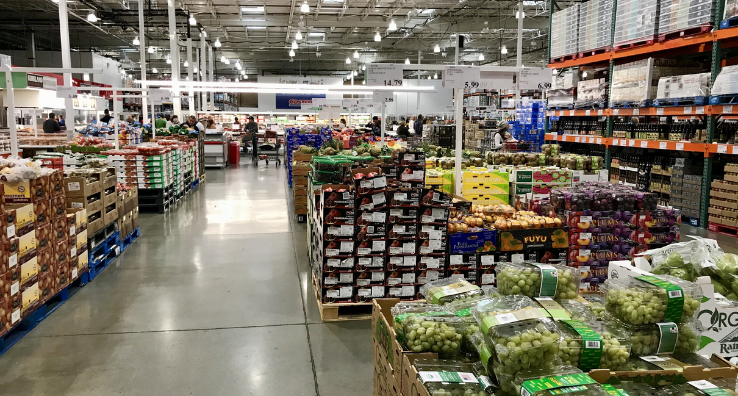Working Together to Build a Sustainable Food Supply with a Food Safety Culture

Last year we featured one of our clients who is making tremendous strides in fighting world hunger. MANA Nutrition makes ready-to-use therapeutic foods (RUTF) that feed more than 2 million severely malnourished children in Africa.
For MANA, food safety is essential. There’s zero room for waste because families desperately depend on MANA and its RUTF products for survival. Any portion that is contaminated with foreign materials or improperly packaged means a malnourished child doesn’t eat.
In many ways, MANA and the children they nourish represent what’s happening with the global food supply. At a time when the world’s population is expected to rise to nearly 10 billion in 2050 – up from 7.8 billion today – we are experiencing epic challenges to maintain adequate food supplies.
Fertile soil is being lost to erosion and contamination at the rate of 24 billion tons a year. Climate changes are curtailing water supplies to the point where now more than one-sixth of the world’s population is living in water-constrained areas, according to the United Nations. And global instability is restricting crop growth, like the Russian invasion of Ukraine where nearly 30% of the world’s wheat is produced.
While we might not be able to tame global strife, on Earth Day we can still think about how we can help maintain healthy food and water supplies through environmental and food safety practices.
This year’s GFSI Conference in Barcelona carried the theme of Delivering Impact for Safe Sustainable Food, encouraging more than 600 food safety professionals and stakeholders to unite and help eliminate poverty and hunger and ensure clean water and sanitation around the world.
The SEC, meanwhile, is proposing rules that require registrants to include information about climate-related risks that can impact their businesses. And companies around the world are spotlighting their environmental efforts in their annual reports. Many investors support these climate-related disclosures because they understand that climate risks can pose significant financial risks to companies and their products.
Intertek Alchemy is working to reduce our carbon footprint by 20% by the end of the year by taking measures to reduce lighting, waste, and unnecessary travel, and adjusting thermostats. Our parent company, Intertek is also seeking to achieve net-zero carbon emission by 2050. And our employees are taking it upon themselves to protect the environment with regular outdoor cleanups and monthly gatherings to learn and expand awareness about environmental and sustainability issues.
We do this not only because we recognize the importance of protecting the environment, but we also support our clients in their efforts to support a global food supply through food safety and environmental sustainability. Helping just one company eliminate wasted foods can make a significant difference. The USDA estimates between 30-40% of the U.S. food supply – which equates to 133 billion pounds and $161 billion – is currently being wasted.
For our clients to be successful, their frontline workers must be engaged with their programs to protect the environment, meet regulatory requirements, satisfy customer demands, and reduce waste, which also reduces their production costs. This level of engagement can be fostered as part of a company’s organizational culture.
GFSI provides a possible blueprint for this through its five dimensions of a food safety culture, which I covered in a previous blog. Adopting and advancing these five dimensions and applying the principles to integrate a sustainability program can help manufacturers receive support from their employees to help maintain a global food supply. These five dimensions include:
- Vision & mission – as part of a comprehensive commitment that covers a company’s overall goals as it grows and delivers products and services to customers.
- People – including key stakeholders and learning organizations along with the organization’s governance, communications, and incentives/rewards/recognition programs. I was fortunate enough to be an active member of the team that helps define and measure this category.
- Consistency – to evenly align food safety priorities with people, technology, resources, and processes.
- Adaptability – to provide the agility needed for companies to quickly respond and adapt to changes in their environments and take advantage of new opportunities.
- Hazards & risk awareness – to help all employees understand the potential food safety hazards that can impact customers and their organization.
Also, Intertek Alchemy created and offers a unique Environmental Responsibility program that combines interactive training, reinforcement materials, a facilitator toolbox, and other features that help clients drive successful programs.
The library covers topics like recycling basics, energy conservation, spill prevention, and other key impact areas. Each topic includes group training courses for frontline workers and additional eLearning for program facilitators.
The courses can also be customized to connect workers to their local environments with facilitator tools to ensure leaders are set up to succeed. The library also offers social media and website templates to help communicate initiatives to customers and stakeholders.
Environmental responsibility and sustainability are achievable if we all work together.
But like any other important initiative, it requires effective communications and training to get everyone to share their individual responsibilities and support because People Make the Difference.





